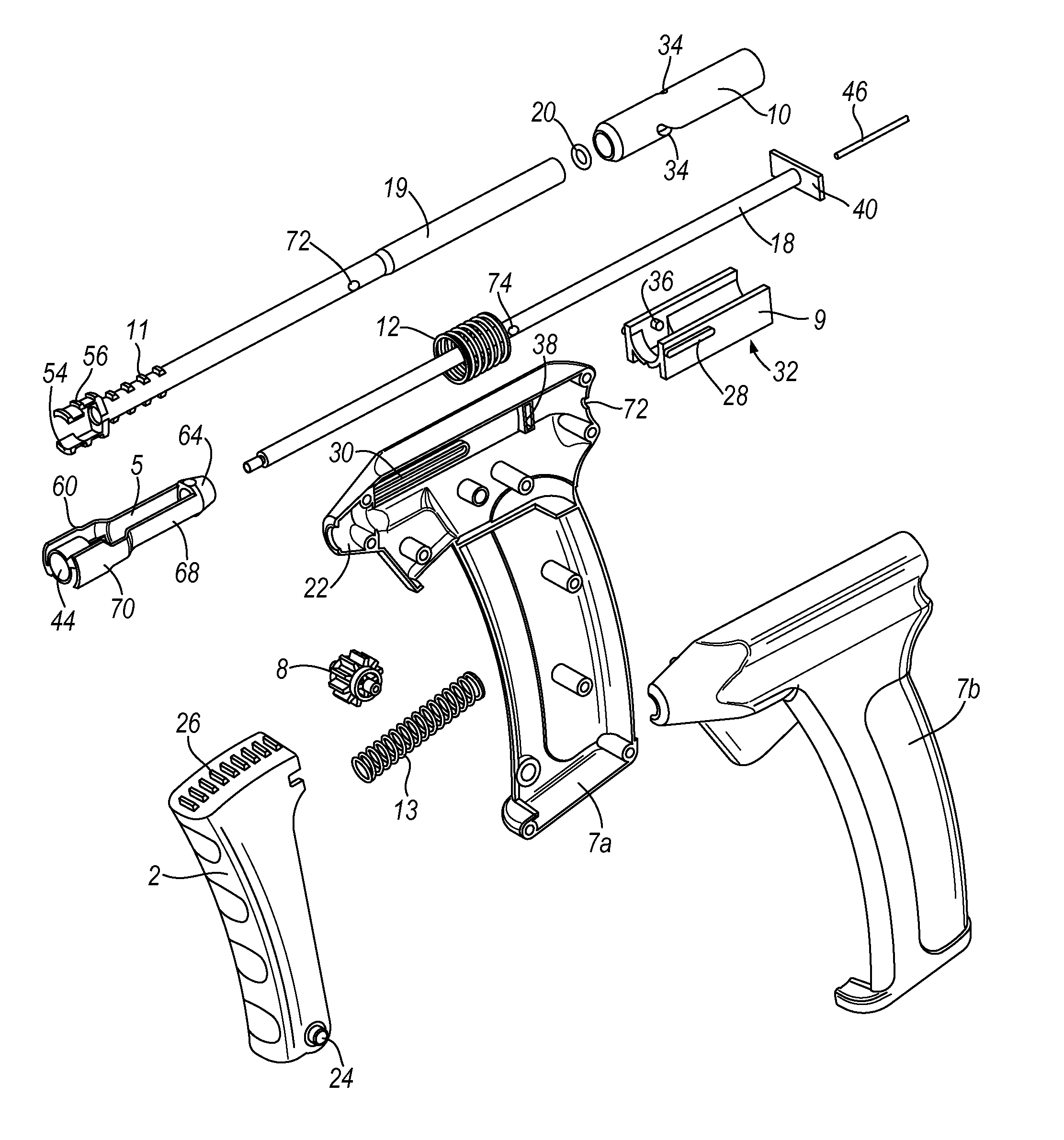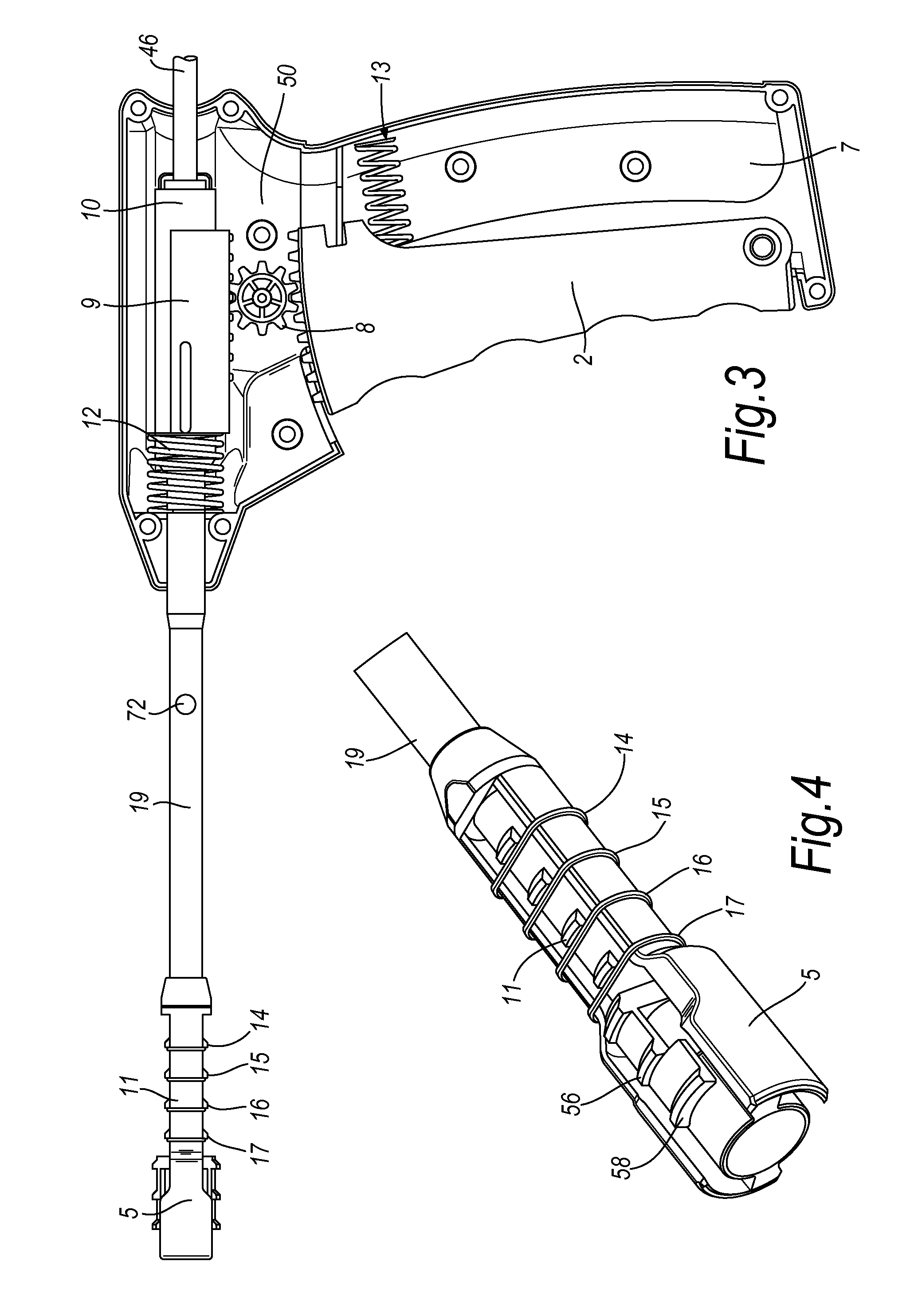Device for applying successive resilient ligating bands to tissue
a resilient ligating band and tissue technology, applied in the field of ligating instruments, can solve the problems of frequent misfiring of rubber bands, the least expensive and most widely used method of rubber band ligation, and the need for re-adjustment, so as to achieve the effect of maximising the view of the practitioner
- Summary
- Abstract
- Description
- Claims
- Application Information
AI Technical Summary
Benefits of technology
Problems solved by technology
Method used
Image
Examples
Embodiment Construction
[0057]Referring to the drawings, there is shown a device 1 for applying successive resilient ligating bands to a haemorrhoid. The device shown in the drawings is mainly formed of moulded polystyrene and includes a housing 7 made up of right and left parts 7a, 7b which are connected together by adhesive or other suitable means. The housing has a generally pistol-like shape with a handle part 7c and a barrel part 7d with a nozzle 22. A trigger 2 is mounted within the handle part 7c of the housing 7 at pivot 24 and is urged by a spring 13 in a forwards direction. The top edge of the trigger 2 carries a toothed rack 26, which engages a gear wheel 8 mounted for rotation within the housing 7.
[0058]A cradle 9 is mounted within the housing 7 for reciprocal forward and rearward movement by the engagement of lugs 28 in closed ended guide slots 30 formed within the barrel part 7d of the housing 7. The underside of the cradle 9 carries a gear rack 32 (see especially FIG. 20) which engages the g...
PUM
 Login to View More
Login to View More Abstract
Description
Claims
Application Information
 Login to View More
Login to View More - R&D
- Intellectual Property
- Life Sciences
- Materials
- Tech Scout
- Unparalleled Data Quality
- Higher Quality Content
- 60% Fewer Hallucinations
Browse by: Latest US Patents, China's latest patents, Technical Efficacy Thesaurus, Application Domain, Technology Topic, Popular Technical Reports.
© 2025 PatSnap. All rights reserved.Legal|Privacy policy|Modern Slavery Act Transparency Statement|Sitemap|About US| Contact US: help@patsnap.com



